Smart Phone Buying Guide 2013: The Best Or Worst High-End, Mid-Range, Budget And Entry-Level Smartphones (Pros And Cons)

Content
- Top Level Flagships
- Large Screen Flagships (Phablets)
- The Best Mid-Range Smartphones
- The Best Entry-Level Smartphones
- The Best Smartphones With Physical QWERTY Keyboards
- "Flagships" And "Budget Options" You Should Stay Away From
- Summary (you can skip to it if you are looking for the answers without all the analysis buzz)
As technology is always developing, all the devices around us are getting better and better and every now and then we might decide it's time to upgrade some of them. Smartphones have become extremely popular and life can become so much easier and pleasant if we get a device that truly answers our needs and desires and that suits us the most. On the other hand, some of us are on a tight budget and we need to make our purchasing decisions accordingly. So don't bang your head against the wall, this article is here to help you make an informed choice.
It's a very good idea to decide how much your are willing to spend, what size of a smartphone are you ready to start living with and what would you like your future smartphone to be able to do for you or for the loved one you are buying it as a present.
1. Top Level Flagships - When Money Is No Object
On the flagship arena there are a few competing platforms and the trend is to offer relatively large touchscreen slab phones with powerful quad-core processors and packed with features. There is a lot of diversity, but in some aspects most of the high-end devices are growing increasingly similar. Currently the best smart phones are offered in the competitive Android space, but Apple and Nokia are trying to hold their ground while BlackBerry is already a goner.
The Best Smart Phone Money Can Buy: LG G2

Pros
| Cons
|
|---|---|
The most powerful processor
| Unconventional button placement
|
Great battery life
| No expandable storage
|
Small bezels - Large display - Pocketable phone
| No removable battery
|
Until recently LG wasn't a leader in the smartphone market, but with devices like the Nexus 4 and the LG Optimus G the Korean company showed great potential. But their greatest achievement is the LG G2 which is considered to be the best smartphone on the market by a great deal of critics and analysts (this one obviously included).
First of all, this smartphone is using the most powerful processor available which is the quad-core Qualcomm Snapdragon 800 clocked at 2.3GHz and paired with 2GB of RAM. This provides blazing performance and very little to be desired speed-wise. This is solid, but not really uncommon. What makes the LG G2 stand out is its unique form factor. It doesn't have any buttons on the side of the phone like almost all smartphone do nowadays and the volume and power controls are located on the back instead. This might be awkward for some but it comes with a few huge benefits. First of all, the bezels are kept as small as possible and the front of the smartphone is virtually all screen. This means that the LG G2 has a larger display than the competitors (5.2'') while the phone itself is not significantly larger and the device remains perfectly pocketable. On top of it all the IPS display is not only large but also gorgeous and provides a full HD 1080x1920 resolution. But this is not all - the LG G2 has most of its competitors beat with its outstanding battery life. It's the first top-of-the line smartphone that can really last throughout the day. The LG G2 has all the standerd radios and sensors plus an infra-red emitter which makes it possible for the smartphone to be used as a universal remote as well.
The only thing to criticize here might be the lack of a removable battery and expandable memory, but this is understandable since it was done to keep the device thin and the battery itself large (3000 mAh).
Other Top-Level Smartphones You Might Want To Look At

Pros
| Cons
|
|---|---|
Cutting-Edge Performance for a Mid-Range Price
| No Removable Battery
|
Pure Android (first in line for updates)
| No Expandable Memory
|
Affordable unlocked
|
Nexus 5
Nexus 5 is the cheapest device you will see in the flagship section of this article, but this deosn't mean it's inferious - quite the contrary. Google and LG teamed up for let another Nexus device after the great success of the Nexus 4 and what came out of this cooperation is one very competitive cutting-edge smartphoe with a mid-range price tag ($350 for an unlocked flagship is not just a bargain but practically a steal). The Nexus 5 is simply the best value for money smartphone on the market today may be save only for the cheaper and less capable Moto G from Motorola. The Nexus 5 packs the fastest mobile processor available right now (Snapdragon 800 clocked at 2.3GHz), 2GB of RAM, a great True HD 1080x1920 5-inch display, all the sensors you need wireless charging capabilities all in a stylish enough body. It actually bests the performance provided by much pricier competitors like the HTC One and Samsung Galaxy S4. On top of it all, the Nexus 5 is a device that is going to be among the first to get new Android versions while the rest will be left waiting for months or left unupdated and its OS will always be pure Android - no costom skins, no bloatware, basically nothing that you didn't sign up for.
So with this Nexus device Google is sending a clear message to everybody in the race - smartphone can and need to become cheaper and the OEMs need to start worrying about that. The only compromises one might notice that were probaby accepted to keep the price as low as possible are the non-remomvable battery, the non-expandable storage and 8MP camera which despite being perfectly adequate is slightly behind the 13MP shooters you find on most other flagships.

Pros
| Cons
|
|---|---|
Processing power
| No removable battery
|
Great build quality & design
| No expandable storage
|
Great display
| |
Unique camera
|
HTC One
The smartphone space is extremely competitive, but HTC One still manages to stand out quite a bit. It sets a very high standard that everybody else needs to compare themselves to in almost every department. This is a very well rounded device boasts competitive specs and impeccable design. Its high-quality build that easily outshines it's biggest Android competitors like the plasticy Samsung Galaxy S4 and it has one of the best looking displays in the industry with the astounding 469 ppi pixel density. On top of it all. the HTC One changes the trend of ever increasing mega-pixel camera counts and provides a new type of camera technology that makes great looking pictures even in low light and the fact that is only 4MP is actually a plus because the resulting image file sizes are smaller and much easier to store and share in social networks. For the people that need a bit more specific specs, this beautiful smartphone is powered by the second best processor in Qualcomm's latest generation - the 1.7GHz quad-core Snapdragon 600 CPU paired with 2GB or RAM. The 4.7-inch Super LCD3 display boasts a True HD 1080x1920 resolution. The HTC One has all the standard radios and sensors plus an infra-red emitter which makes it possible for the smartphone to be used as a universal remote as well.
The only things that might be considered as shortcomings might be the absence of expandable storage and removable battery.

Pros
| Cons
|
|---|---|
Very Powerful
| Cheap-Feeling Plastic Build
|
Packed With Unique Software Features
| PenTile Display
|
Removable Battery
| |
Expandable Storage
|
Samsung Galaxy S 4
The Samsung Galaxy S4 is a great device and is currently one of the most expensive devices on the market and in some aspects it might easily be considered the best. The most popular version of the device is powered by a 1.9GHz quad-core Qualcomm Snapdraggon 600 processor paired with 2GB of RAM, but Samsung has also made a version that runs on their home-grown 8-core processor. Unfortunately this is not a true octa-core CPU because it actually has 2 sets with 4 cores each - one powerful and one battery-friendly. So for power-hungry tasks like gaming it switches on it's powerful 4 cores while for the more mundane ones, it uses the smaller, more energy-efficient 4 cores that gives it longer battery life. But it never runs on the 8 cores together. Anyway, no matter which version you get, it's very powerful despite the fact that there are already a number of smartphones boasting even faster processors.
On top of it all, the phone has a gorgeous looking AMOLED display which unfortunately has shared sub-pixels (PenTIile), but this is impossible to feel at the great resolution the phone has. The biggest selling point of the device besides its raw horsepower is the abundance of unique software features that Samsung has packed into it like AirView that allows you to look at additional information about something by hovering your finger over the display, scrolling using your head movement, and pausing the video player when you look away.
The main reason this mighty device is not number one in this list is the fact that Samsung did what they always do - used cheap plastics for the build of the device, so this great smartphone feels and looks like a plastic toy compared to the much better looking and feeling HTC One, iPhone 5s and even the now out of prodction Nexus 4. And of course the Snapdragon 800 smartphones like the LG G2 and the Samsung Galaxy Note 3 are actually more powerful.

Pros
| Cons
|
|---|---|
High-Quality Build
| Allmost nothing new
|
Abundance Of Apps / Intuitive OS
| No removable battery or microSD
|
Fingerprint scanner
| Quite Pricy
|
64-bit processor
| Smaller display
|
Apple iPhone 5s
The iPhone 5s is Apple's latest flagship smartphone that many might have expected to see on top of this list. Unlike the abundance of Android flagships, the iPhone 5s is part of a different ecosystem less messy and more tightly controlled. While Android gives its users more customization and control capabilities like widgets, iOS is going for a cleaner and simpler interface with easy access to a wide selection of useful apps. For some users this, alongside the great design and build quality, and some new arguably gimicky features like the fingerprint scanner and option to get it in gold might be enough, but in our eyes this device is quite overpriced and the 4-inch display makes us long for the larger screens on the competitive Android flagships. Despite this minor set back, like all Apple products, the iPhone 5s handles like a charm has a nice looking display and is a pleasure to use. This device also has a new generation of processor that is 64-bit (up from 32) and is a world first, but will not be put to much use anytime soon since developers need to write apps that take advantage of it first. So it's all future proofing.
Still, even If you are a fan of Apple's smartphones, we would advise you to wait for a more radical and exciting update and hold out for the iPhone 6 or whatever device or line of devices Apple comes out with next year. Especially if the rumors for a even larger screen are to be believed.

Pros
| Cons
|
|---|---|
Unparalleded 41MP Camera
| Limited App Selection
|
Outstanding Picture Quality
| Last Year's Specs (except the camera)
|
Great Build Quality
| Quite Expensive
|
Nokia Lumia 1020
If you are crazy about photography and you want your smartphone to sport the best camera sensor possible, there is no other option like the Nokia Lumia 1020. Unlike its its very awkward and gimmicky competition the Samsung Galaxy S4 Zoom, this is a top-level smartphone that compromises with nothing. It is actually the most powerful Windows Phone 8 non-phablet device on the market despite the fact that it's 1.5GHz dual-core processor paired with 2GB of RAM cannot compare with the horsepower provided by the LG G2, Nexus 5 or HTC One. Luckily Windows Phone 8 is a very light and well-optimized OS and this smartphone handles it like a breeze.
The 41MP camera sensor with a Carl Zeiss lens and next generation Xenon flash outclasses everything on the market. It lets you control all the settings you would have access to on a professional camera like ISO and shutter speed and it uses it's huge pixel count to make your 8MP photos as clear as possible. It has physical stabilization and the greatest low light performance seen on a smartphone.
On top of it all, this is a device with a high quality build and the only things it lacks as far as hardware goes are expandable memory and a removable battery. As far as software goes Windows Phone 8 is starting to catch up with Android and iOS, but it still doesn't have the wide selection of apps provided by the two market leaders. But if you want the best cameraphone on the the market, you'll have to make do with that little compromise. The other thing you'll have to stomach if you want this device to be your daily driver is its price tag which is understandably high.

Pros
| Cons
|
|---|---|
State of the art internals
| Not particularly flashy
|
Good 20.7MP Camera
| non-removable Battery
|
waterproof, dustproof
| |
very well-rounded
|
2. Large Screen Flagships (Phablets)
The current trend is for smartphones to be sporting bigger and bigger displays and some of them are taking this to the extreme. We call them phablets because they lay somewhere between regular smartphones and tablets.
Sony Xperia Z1
Sony has been struggling to create competitive smartphones but the Sony Xperia Z1 has a few tricks up its sleeve that might attract some buyers. First of all, the Z1 is modern flagship covering all standards like have the state of the art processor of the day - the 2.3GHz quad-core Snapdragon 800 paired with 2GB of RAM and a gorgeous 1920x1080 5-inch True HD display. It has all the standard sensors and such but it also has a few special treats to offer. First of all it is water and dust proof and it also has an exceptionally good 20.7MP camera and might be the best camera phone option for smartphone users that want to stay on Android and are not willing to jump ships just the get the 41MP camera on the Nokia Lumia 1020.
The Sony Xperia Z1 smartphone doesn't really manage to outshine the best features of its most popular competitors, but its best asset is the fact that this is one of the most well-rounded Android devices on the market that can handle anything and that will not have you complain about anything - it has great build quality, top specs and an array of compelling features. So this might very well be the Android smartphone for you.

Pros
| Cons
|
|---|---|
The Best Performance Possible
| Might Be Too Big For Some
|
Cool S-Pen and other proprietary functionality
| Not Cheap
|
Samsung Galaxy Note 3
The first smartphone to achieve commercial success in the phablet category was the original Galaxy Note and now the Galaxy Note 3 cements Samsung's place as the leader in that space. Actually it's safe to say that the Samsung Galaxy Note 3 is the most powerful smartphone on the market today as far as processing power is concerned - it's sporting the state-of-the-art Snapdragon 800 quad-core 2.3GHz processor paired with the record-breaking and unparalleled 3GB of RAM. But this phablet has far more to offer than raw horse-power. On the hardware side, besides the normal finger input, it also features the signature for the Note series S-Pen which is a stylus on steroids. It provides a lot of additional functionality for the beautiful 5.7 inch True HD (1080p) display and all the features (especially the spit-screen multitasking) Samsung has managed to cram into this large smartphone make it a very compelling choice. It is not cheap but it's unique functionality and powerhouse performance will surely leave any customer satisfied - as long as you are looking for a phone with such dimensions. In the Note 3's defence, it sports a pretty large screen, but the dimensions of the phone haven't increased to much from its previous iteration and it's still surprisingly comfortable to hold.

Pros
| Cons
|
|---|---|
Extremely powerful
| Might be tool large for many
|
Any pen or pencil can be used as a stylus with it
| Less stylus (pen/pencil) functionality than the Note 3
|
Large High-Quality Display
| |
waterproof, dustproof
|
Sony Xperia Z Ultra
The Sony Xperia Z Ultra is one of the largest smartphone available, being almost as big as a small tablet, but it also has a lot of unique features and personality to show for. First of all, it is one of the most power smartphones and is also taking advantage of the latest CPU from Qualcomm - the 2.3GHz quad-core Snapdragon 800 paired with 2GB of RAM. It's also has a gorgeous 6.4 inch True HD display with a 1080x1920 resolution. It also supports direct pen and pencil input, so you don't even need to bother with a stylus or an S-Pen like with the Galaxy Note 3, but the functionality of Samsung's phablet is still greater. The Xperia Z Ultra is still larger and it's also incredibly thin which makes it bearable to handle and might be a great device for the people that want something really large that can satisfy both their smartphone and tablet needs with one swoop. The last trick that this very powerful smartphone has up its proverbial sleeves is the fact that it is comepletely waterproof, so if you want to be able to use your absolutely top-of-the-line phablet in the shower - this would be the smartphone to get.

Pros
| Cons
|
|---|---|
State of the art specs / Great Performance
| Still Limitted App Selection on Windows Phone
|
Great build quality and color options
| non-removable Battery
|
Gorgeous 6-inch Display
| Might be too big for some
|
Great 20MP Camera
| |
microSD slot
|
Nokia Lumia 1520
Finally, Nokia has come up with a phablet for its Lumia line and besides being the largest Windows Phone smartphone on the market, the Nokia Lumia 1520 is the best Windows Phone smartphone on the market. It's actually the first time in Windows Phone's history that a device running Microsoft's mobile operating system is actually on par with the rest of the flagships on the market specwise. And the Nokia Lumia 1520 is really a joy and a marvel.
First of all, the device has the typical Lumia high quality polycarbonate build and unique and attractive looks. It's stylish and it feels great in the hand if you can stomach its large size. But the nicity isn't only on the outside like it used to be with usually underpowered Lumia devices of the past. This smartphone is powered by the state of the art 2.3GHz quad-core Snapdragon 800 CPU paired with 2GB of RAM and has a gorgeous True HD 1920x1080 6 inch Clear Black display that is exceptionally good in sunlight compared to many other competing flagship phablets. The device has a huge 3400mAh non-removable battery and microSD slot for expandable storage.
Another area where the first Windows Phone phablet excels at is it's camera. Despite the fact that it doen't rock the 41MP sensor you could find on the imaging beast that is the Nokia Lumia 1020, the 20.4MP PureView sensor with optical image stabilization and Carl Zeiss optics is still going to deliver amazing results unparalled in the phablet category.
The only thing that might put you off from buying this great phablet is its operating system. Despite the fact that Windows Phone 8 provides a pleasurable and fresh user experience and runs like a charm on this very powerful device, it still hasn't managed to fully catch up with iOS or Android and the app selection is still a bit limitted compared to the two big dogs'. But Windows Phone has made some serious progress and many users would nowadays manage to find most of the things they might need in its ecosystem and great devices like the Nokia Lumia 1520 are giving it an ever better fighting chance.
3. The Best Mid-Range Smart Phones
We’ve discussed some excellent devices, but sometimes you simply cannot afford the top dollar required to get a flagship. In this case it’s advisable that you go for a mid-range device that would still be stable, reliable and functional enough to handle the daily load despite not doing so as quickly as the top dogs. In this categories the diversity is even bigger and it’s quite hard to differentiate between the endless slew of similarly specced slabs that have flooded the market, but still there are devices that are much better than others.
The Best Mid-Range Smartphone On The Market: HTC One Mini
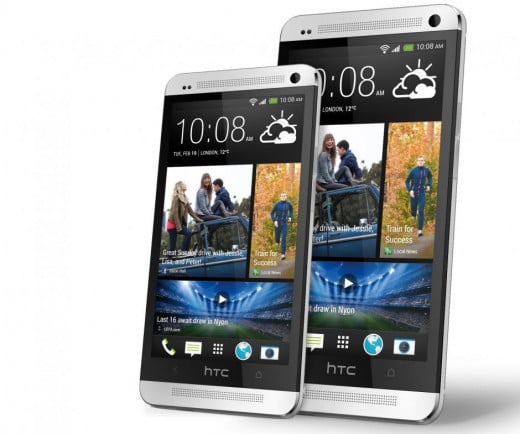
Pros
| Cons
|
|---|---|
Great Screen And Resolution
| No MicroSD
|
Great Build Quality And Design
| No Removable Battery
|
Unique Camera
| No NFC
|
The HTC One MIni is a great mid-range option and would leave many customers that don't need the latest and greatest satisfied. It's a bit more compact than its bigger brother standing at 4.3-iches and still has a larger screen than the iPhone 5 and doesn't come with too much of a compromise. It has one of the best screens in this category with an HD resolution of 1280x720. It also has the same revolutionary camera sensor and high-quality build as the HTC One, so if you want a more compact smartphone this is a great option. Additionally it carries on the front facing stereo speakers that provide it with a much better sound when you are not using headphones than the competition. It is powered by a 1.4GHz dual-core Snapdraggon 400 processor paired with 1GB of RAM and its storage is limited to 16GB. What it lacks and you might want is expandable storage, removable battery and NFC and if you feel that you need any of the three, simply look below.
Other Solid Mid-Range Devices

Pros
| Cons
|
|---|---|
Great Performance Sometimes Even Comparable To The Flagships
| The Display Is Not The Best
|
8MP Camera, Removable Battery
| Cheap Plasticy Build
|
microSD, NFC
| Less Internal Memory
|
Samsung Galaxy S4 Mini
Samsung's Galaxy line has made it the biggest smartphone producer in the world and there is a good reason for that. Samsung knows how to make a wide range of competitive devices and the Samsung Galaxy S4 Mini is a good example of that. It's more or less a scaled-down version of Sammy's current flagship, but of course everything about it has been downgraded a notch including the price. This Mini offering has more powerful internals than HTC's listed above and is powered by a 1.7GHz dual-core Krait processor from Qualcomm paired with 1.5GB of RAM, but a lower resolution screen at 960x540. Its build quality is typical Samsung which means plasticy and cheap-feeling. It has only 8GB of internal storage, but fortunately it's expandable via a microSD card. It's lower quality screen provides it with a better battery life though and on top of it all it's juice-pack is also removable. The Samsung Galaxy S4 Mini also has NFC and there is a dual SIM card model which might make it the best device available for the people that would like to have an access to more than one network without having to carry two chunky devices.

Pros
| Cons
|
|---|---|
Quad-Core Processor
| Limited Internal Storage
|
Great Build Quality / Very Slim
| UI not as good as on the Galaxy S4 Mini and HTC One Mini
|
microSD and removalbe battery
| |
Good Value For Money
|
Huawei Ascend P6
Haiwei are not a top brand, but they are greadually becoming one of the big players and their success in China is giving them the basis to invade other markets and very often their handsets have the needed quality and are very good value for money. Such is the case with the Huawei Ascend P6 which is one of the not so many quad-core mid-range options. The device runs on a 1.5GHz quad-core processor and offers 2GB of RAM which provides a nice enough performance, but the most important feature here is the overall design. This smartphone has a nice looking 1280 x 720 4.7-inch display housed in a well-build and very slim body. This smartphone actually feels more premium on the outside than most of Samsung's offering for instance and this is an important asses. The device also comes with a 8MP camera on the back and an overpowered 5MP camera on the front, microSD slot and a removable battery which also sweeten the deal. The Huawei Ascend P6 also has a dual SIM card option, so if you don't like the low resolution and small size of the display on the Samsung Galaxy S4 Mini, the Huawei Ascend P6 dual-SIM might be your best way out.

Pros
| Cons
|
|---|---|
Memorable Design
| Might Be Considered Bulky
|
Stable Performance
| No ICS Yet
|
16GB Of Internal Storage
| Not As Powerful As The HTC One S
|
Sony Xperia P
Despite the fact that Sony are having a very hard time competing on the highest level and the corporation is struggling for survival, they managed to pull an interesting mid-ranger that actually stands out of the pack, even if the device is a bit on the bulky side. The interesting design is paired with acceptable internals, good display and fair performance. It depends on a 1GHz dual-core processor and 1GB of RAM, 16GB of internal storage and a 8MP main camera. It still hasn’t been updated to ICS and it doesn’t have any expandable storage option.
4. The Best Entry-Level Smart Phones
If you are planning to start entry-level, you should know that it’s a treacherous land and there are a lot of swamps you could sink in. Manufacturers are making all kinds of compromises with hardware, build quality and materials, and even software in order to keep the price as low as possible. There are quite a lot of phones to choose from, but very few of them are dependable enough to be recommended. But there are some that are worth our attention.
The Best Entry-Level Smartphone: Motorola Moto G
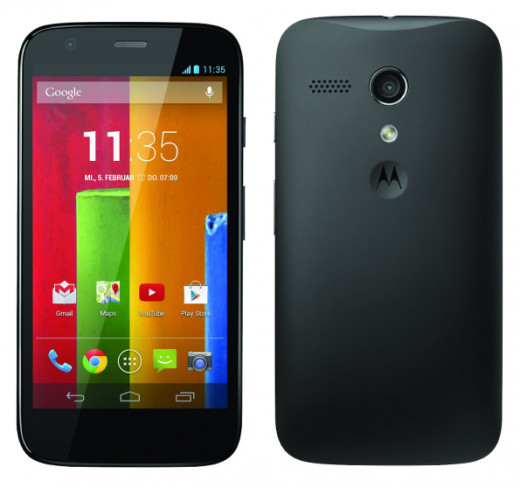
Pros
| Cons
|
|---|---|
Very cheap / Great Value-For-Money
| No microSD
|
Quad-core performance
| Non-removable battery
|
Great display
| |
Great build
|
The Moto G by the Google owned Motorola is simply the best budget smartphone on the market and it leads its class by far. The most common phrase that you are going to read this phone's reviews is "mid-range specs with an entry-level price tag". Android smartphones are becoming cheaper and cheaper and the Moto G comes to show that cheap smartphones don't have to suck. The Moto G is powered by a 1.2GHz quad-core Qualcomm Snapdragon 400 CPU assisted by 1GB of RAM, has a 4.5 inch 1280x720 HD display which has a very similar pixel density to the iPhone 5S and it's retina display and can be proud with a very nice build quality. The 8GB version costs only $179 unlocked with the 16GB version going for $199. This means that this smartphone dramatically outshines any similarly priced device available on the market today, so getting anything else instead of this if you are on a budget simply does not make sense. Of course, this is not a flagship and there are certain trade-ofs like the 5MP camera and the lack of microSD card slot or removable battery but those shouldn't be a big deal keeping in mind everything the affordable Moto G has going for itself.
Some Other Interesting Entry Level Contenders
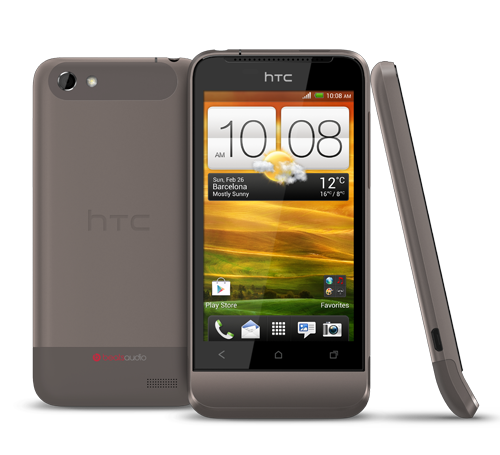
Pros
| Cons
|
|---|---|
Quality Anodized Aluminum Build
| Only 4GB Of Internal Storage
|
microSD
| Single-Core Precessor
|
Fair Display
| |
Stable Performance
| |
ICS with HTC Sense 4.0
|
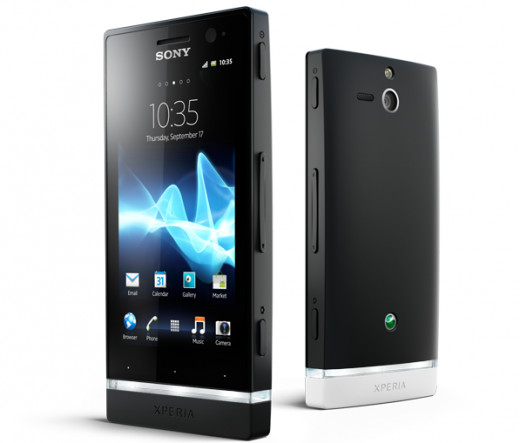
Pros
| Cons
|
|---|---|
Memorable Design
| Only 4GB Of Internal Storage
|
Dual-Core Processor
| No microSD Or Other Storage Expansion Options
|
Stable Performance
|
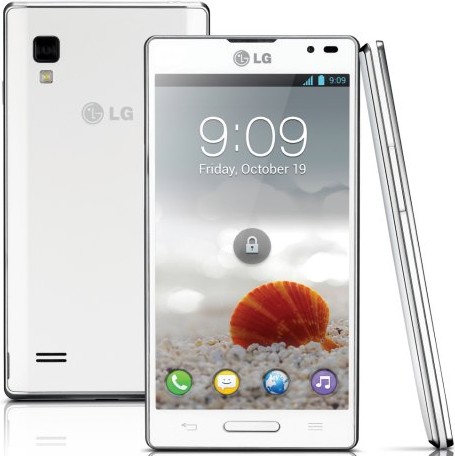
Pros
| Cons
|
|---|---|
Large Display
| Lacks A Bit In Performance
|
Polished Design
| Low Quality Camera
|
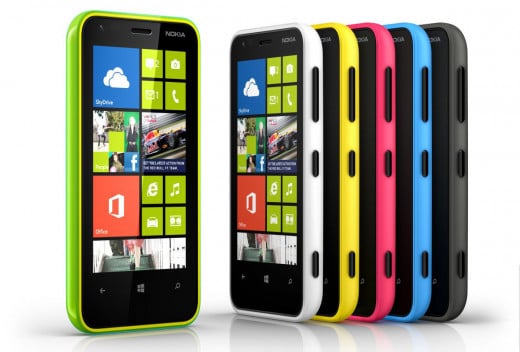
Pros
| Cons
|
|---|---|
Responsive Performance
| Narrow App Selection
|
Great Build Quality
| Mediocre Internals
|
Reliable And Cosistant Windows Phone 8
|
HTC One V
HTC turned a lot of heads with its new One series with both the HTC One and HTC One Mini becoming top dogs in their respective weight-classes and the HTC One V is a bit of an older contender for the entry-level. It has a 1GHz single-core processor paired with 512MB of RAM, a 5MP camera and running Android 4.0.4 (Ice Cream Sandwich). The 3.7” LCD 2 display has fair detail and good viewing angles. It has only 4GB of internal memory, which luckily can be expanded via a microSD card. The anodized aluminum body has nothing to do with the flimsy plasticy build of a lot of the other low-end devices and the device is aimed at dominating its market segment.
Sony Experia U – if what you want is compact
Despite the fact the Sony can’t do much in the high-end domain, they present us with a respectable small entry-level offering. It has a bright 3.5” display that looks nice enough and its small size makes it comfortable to hold and operate. This device is powered by a 1GHz dual-core processor, which is a rarity in this price-range, supported by 512MB of RAM. It has a standard 5MP shooter, but only 4GB of internal memory and worst of all, no memory expansion options. Its performance is relatively stable and this phone provides a good value for money.
LG Optimus L9 – the entry-level smartphone with an extra-large screen
Another interesting option in the lower end of the smart phone market is the LG Optimus L9. It’s an entry level device that differentiates itself by its screen size. It’s rocking a 4.7” display with an acceptable resolution, which will provide entry-level buyers with the comfort of more touchscreen real estate. This phone's display is similar in size to the Nexus 4 for example, but it cannot compare with it's resolution and pixel density. It is powered by a 1GHz dual-core processor paired with 1GB of RAM and rocks a 5MP camera. The design is stylish and the phone locks serious. Unfortunately, it lacks the more responsive performance of the HTC One V or the Sony Experia U. Anyway, if you are looking for a entry-level smartphone, LG's L series and it's second generation have similar offerings in smaller sizes starting from the small LG Optimus L3 II, the medium sized L5 II and reaching the L7 II which might be a relatively good choice if you are ready to settle for it's 4.3" screen.
Nokia Lumia 620
If you are tired of Android and iOS, Whindows Phone can provide with a third fresh alternative which shines incredibly well in the entry-level class. First of all, the Nokia Lumia 620 provides a great build quality in contrast to most of its competitors in the lower price range and comes in an array of vibrant colors. It's internals don't look very impressive on paper with its 1GHz dual-core processor and 512MB of RAM, but the biggest strength of Windows Phone 8 is that it runs pretty well on less capable devices, so the user experience is much better than on similarly priced but dodgier Android options. It has a good enough 3.8 inch display with a 800x480 resolution, 5MP camera on the back and a camera on the front too. If you need a reliable smartphone that is reasonably responsive on a budget and don't mind the narrower selection of app available for Windows Phone 8, this might be a device that would leave you quite satisfied.
5. The Best Smartphones With Physical QWERTY Keyboards (a.k.a. Sliders) - Compromise Is Mandatory
The current trend in smart phone design is to build the thinnest and lightest beast of a phone with a large touchscreen that takes up most of the device's front side. But there are some users that simply cannot do without the tactility, convenience and sheer speed of a physical keyboard, so there are some smartphones that were built specifically to satisfy their text input needs. The best solution currently available comes from a class of smartphones with large touchscreen panels enhanced by the killer feature of a slide-out physical QWERTY keyboard. We have yet to see a slider packing a bleeding-edge quad-core processor, but there are still some almost decent options despite the fact that most of them already feel quite outdated. On top of it all, very often each device is available on just one or two carriers and if you want to purchase your smartphone with a subsidy your choice becomes even more limited. But if you feel you need a both a high-end smartphone and a physical keyboard, there might be a solution for you, so please scroll down to our "So... (the creative solution)" section below.

Pros
| Cons
|
|---|---|
The Best Specs and Performance (in this category)
| Could Use A Better Display
|
Good Battery Life
| A Bit Hefty
|
Good LTE Performance
| |
Great Keyboard
| |
8MP camera
|
Motorola Photon Q
The Motorola Photon Q is one of the few Android smartphones with physical keyboards that could claim almost flagship quality. It has 1.5GHz dual-core processor paired with 1GB of RAM which promises the best performance in the class. It has a nice enough display which cannot compare to flagship devices like the HTC One X+ or the iPhone 5, but still does a great job compared to its direct competitors. Additionally, it provides nice battery life, a great 5 row QWERTY slide-out keyboard, LTE which will give you the fastest possible downloads where available and an 8MP camera which is rare for the space. If you are in the market for a top-notch slider smartphone, despite being far from perfect, the Motorola Photon Q is one of the best possible choices with the best internals on a slider smartphone so far.

Pros
| Cons
|
|---|---|
Nice Specs (for this category)
| Worse Performance Than Samsung Captivate Glide
|
Impressive Battery Life
| Low Quality Screen
|
Good LTE Performance
| QWERTY Requires Compromise
|
Great Keyboard
| |
8MP Camera
|
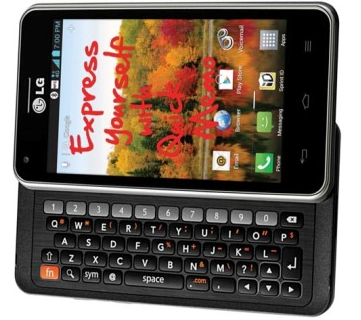
Pros
| Cons
|
|---|---|
Decent Performance And Specs
| A Bit Hefty
|
Good Keyboard
| Could Use A Better Display
|

Pros
| Cons
|
|---|---|
Good-Looking Display
| Worse Battery Life
|
Great Performance
| QWERTY Requires Compromise
|
A Galaxy Family Member
|

Pros
| Cons
|
|---|---|
Great Keyboard
| Small Screen
|
Good Build Quality
| Very Narrow Selection Of Apps
|
Good Bettery Life
|
Motorola Droid 4
A lot of the manufacturers simply do not view these types of phones as flagship material, but Motorola, whose last year's flagship phone might not have been the best have decided to make a version of it with the same internals with the addition of a slide-out QWERTY keyboard. The phone offers good LTE performance, one of the best keyboards out there, good battery life and an 8MP camera. It sports a 1.2GHz TI Omap processor like it RAZR brother paired with 1GB of RAM. The weak point of this device is the quality of the display which might have been the needed sacrifice for the extended battery life. Since the most important quality of a QWERTY device is utility, this should be considered as one of the best devices in this category because of its good battery life and acceptable specs.
LG Mach
The LG Mach is another solid but not great slider Android device. It's also stuck in last year specwise and provides nothing special besides utility. On the down side, it's one of the heftiest QWERTY smartphones in this list and has a hard time standing out. It runs a 1.2GHz dual-core Snapdragon S4 paired with 1GB of RAM which provides a solid performance and this paired with the decent display and the nice physical keyboard makes it a good choice if available. It comes with Android 4.0 Ice Cream sandwich and LTE which are all things that make it a very competitive choice in this category.
Samsung Captivate Glide
Another acceptable slider QWERTY smartphone is the Samsung Captivate Glide which provides a higher quality screen despite it's lower resolution and a more responsive performance despite its lower clock speed. This comes to show that sometimes the numbers are not the only thing that matters and some manufacturers simply know how to optimize the performance of their handsets better than others. The Samsung Captivate Glide is a member of the Galaxy family and is sold on some networks as The Samsung Galaxy S Glide. It sports a 1GHz dual-core processor manufactured by Samsung themselves paired with 1GB of RAM. It's weakest aspect compared to the Motorola Droid 4 is its shorter battery life. In the end it's hard to recommend if your carrier can provide you with a better choice.
BlackBerry Q10
Buying a BlackBerry is a move that is not for everyone, but there are people that might appreciate their latest offerings' uniqueness. First of all, we need to mention that all BalckBerry devices are running their own operating system called BlackBerry 10 which means a very limited app selection compared to iOS and Android's vast ecosystems, so if you would like to use your smartphone for all kinds of different things, this is not the device for you and it's also mentioned in the "Devices you should stay away from" section of this article. Having this disclaimer out of the way, there are things that the BlackBerry Q10 might be good for, keeping in mind that many of the Android options sporting keyboards are not that great anyway. This smartphone provides a solid performance despite with its 1.5GHz single-core processor, 2GB of RAM and it's small 720x720 resolution touchscreen display. The keyboard is great and easy to use and some business oriented functions like e-mail, security work great. Additionally, this device also supports microSD cards for expandable storage and has NFC. Unfortunately the new operating system is now touch-optimized and the small display can make it a bit of a headache to use and the fact that many of the apps available are actually direct ports of Android apps makes the user experience even worse. So if this is enough to satisfy you and you are planning to use your smartphone in a similar way to a feature phone this might be a device you would be happy with. Still, it has very little to offer to people that want to do more and this is an important warning.
So... (the creative solution)
As mentioned above none of the devices on this category are coming without compromise and a quad-core slider phone will probably render the fans of this category catatonic.
Before you settle for any of the compromise devices above, or even worse - consider even weaker options like the Samsung Epic 4G, the rare HTC Arrive Windows Phone 7.5 slider, Pantech Marauder, or T-Mobile's MyTouch 4G, you need to be aware of the fact that there are Samsung Galaxy S4 and iPhone 5 cases that include a slide-out keyboards that connect via Bluetooth and could be a welcome remedy for the situation letting users use a QWERTY keyboards with their powerful and up-to-date smartphones instead of settling for a mediocre device just because of its keyboard. Of course, using a third party accessory can sometimes be a bit of a headache and no solution in this niche is perfect, but if you want a top-end slider, this is the only real way to go!
6. "Flagships" and "Budget Options" You Should Stay Away From
There are a lot of great smartphones on the market, but there are also a lot of devices that look great in pictures and in paper, but are bound to disappoint you or keep you from knowing what you are missing. Usually the problem with these seemingly top-of-the-line devices is their lackluster operating system or software (usually the lack of it) and their underperforming internals.

The first slew of devices on this burn list are all the Windows Phone 7 smartphones lead by the Nokia Lumia Windows Phone 7 line and supported by some HTC and Samsung models. Windows Phone 7 itself is not such a bad OS, providing a nice and interesting user experience and stable and reliable performance. So what's the problem then? Well, currently the app selection available for Windows Phone is quite limited and a Windows Phone 7 device will never ever be upgraded to Windows Phone 8. So don't get a smartphone running Windows Phone 7 unless you buy it on a great bargain and don't mind the prospect of toying around with a device that has good, but extremely limited functionality. Good for totally non-techie girlfriends, wives and grandmas only.
Still the fact that Windows Phone 8 is better than Windows Phone 7 doesn't mean that it's a good idea and most users will be happier with a similarly priced (which also means better specced) Android device instead.
You can read more on the topic here: Why you shouldn't buy any Nokia Lumia smart phones
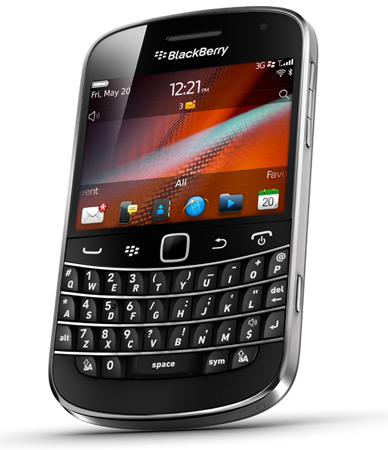
Another company that is currently struggling financially and might soon be going bankrupt, because of its uncompetitive devices like Nokia is BlackBerry with their current smartphone line. BlackBerry used to be the smartest of smart phones on the market a few years ago, but it simply fell behind the competition of iOS, Android and even the struggling Windows Phone. RIM was too set in its own ways to be able to play the new game at the level of Apple and Google, so it simply fell out of grace. The company did their best to return to their former glory with their new BlackBerry 10 operating system and their Z10 and Q10 smartphones, but they are still not what they should be. They are not bad devices, but they are suffering from the same problem the Windows Phone devices are having trouble with - not enough apps available making the usability of the devices narrower.
Read more about what's wrong with BlackBerry's new pair of smartphones here: Buying a BlackBerry Z10 or Q10 smartphone is only for fans – bad idea for the rest
The third group of devices that should be avoided are the really cheap Android devices. One of the common traits you are going to know those smartphones are their unknown brands and their MediaTek processors. Processors by MediaTek are not that bad really, but they tend to find their way into half-baked Android smartphones that have not been thoroughly tested. This means that the usually their brave and budget-conscious buyers usually end up buying devices that are extremely buggy and absolutely unreliable. When you get a smartphone, in most cases it becomes your lifeline. And you don't want your lifeline to be undependable. Well, this is what those devices. One of the biggest names that are sinners in this department are Samsung, Huawei, LG and ZTE. So be very careful what you buy because in the smartphone world, it is quite possible for the cheap to turn out to be useless.
The last group of offenders are devices that try to pass themselves as smartphones but are not. They deserve to be banned from sales. Brutal and disgraceful example is Samsung’s bada OS line. It includes Samsung’s Wave and Star lines, plus some other even more lackluster low-end garbage that doesn’t deserve to be called a smartphone. Samsung’s own bada OS is an experiment that went wrong and should have never been released to market. It claims to be an OS, but there are more apps available for Symbian than for it. So if you buy a Wave or a Star you are buying a buggy internet-enabled feature phone with sluggish performance for a price of a real smart phone. So simply stay away from it. Still Symbian is also a bad idea and was abandoned by Nokia and will soon be discontinued. Deservedly so.
You can read a detailed review of one of those excuses of a 2011 device here: Samsung Star II Duos GT-C6712 Review
7. Summary - What To Get
Best Smartphone: LG G2
Worthy Contenders: Nexus 5, Samsung Galaxy S 4, iPhone 5s
Best High-End Value-For-Money Smartphone (unlocked): Nexus 5
Best Budget Value-For-Money Smartphone (unlocked): Moto G (Motorola) - coming soon
Best Mid-Range Device: HTC One Mini - better wait for Moto G
Best Entry-Level Device: HTC One V - better wait for Moto G
Best Extra-Large Screen Smartphone (phablet): Samsung Galaxy Note 3
Best Dual SIM Device: Samsung Galaxy S4 Mini Dual SIM
Best Battery Life: LG G2
Best Windows Phone Device: Nokia Lumia 920 / 925 / 928
Best Cameraphone: Nokia Lumia 1020
Best smartphone with a QWERTY keyboard: Samsung Galaxy S4 with a slide-out keyboard case
WARNINGS:
-
Things to stay away from: Blackberry, Windows Phone 7, Chinese Bootlegs, Knock-Offs and Lookalikes, Anything from Samsung that is not their flagships
-
Things to be cautious about: anything running something other than Android (minimum 4.0 but try to get at least 4.1, 2.3 is already too old), iOS, or maybe Windows Phone 8.








